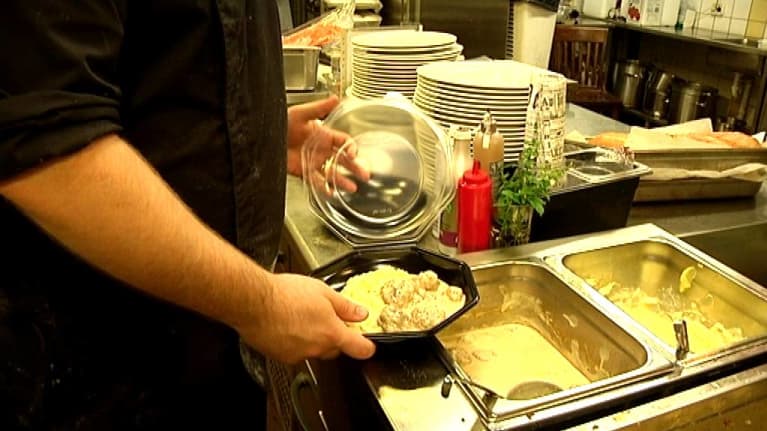Finnish households produce massive amounts of waste food every year, measurable in dozens of kilograms per home.
"The average amount of food that gets thrown in the bin in a four-person family is about 100 kilograms a year," says project manager Harri Herlin from the Tampere environmental group EcoFellows.
Food that ends up being thrown out has gone through the entire supply chain, all of which effort is effectively nullified.
"The things needed for most types of food include sowing, reaping, water, soil, labour, processing, storage and transportation – for starters," Helin says. "All of those resources go to waste when food is discarded."
The oft-repeated mantra so well known to children – "Finish your food!" – is also taken up by Helin.
"If you put it on your plate, you should eat it. Food costs too little for us here in Finland," Helin claims. "Money talks, even if it isn't the only issue."
Waste and cash
Throwing away edible food is an everyday occurrence in restaurants and cafés. Lunch restaurants find it hard to estimate the number of servings sold.
"We have extensive experience and we keep a close eye on waste food, but every day is different and the number of customers varies," says manager Pia Luoto from the Bella Roma restaurant in Tampere.
Luoto's restaurant is part of the Restamax conglomerate, which began selling leftover food a few weeks ago. Involved are six restaurants in Tampere and three in Lempäälä.
"We want to do our part for the environment and perhaps we'll get more places on board," says Eero Aho from Restamax.
On Wednesday after the lunch rush there were four servings of oven-browned tuna pasta and four helpings of meatballs with mashed potatoes. The food is sold through the Lunchie smart phone application.
"It's easy for us and for the customer," Luoto says.
Leftover sales have brought smiles to customers' lips as well as bringing cheer to the kitchens.
"It has felt really bad to throw freshly prepared food into the garbage!" says Luoto.
Bread and bananas
Food is also constantly wasted in grocery stores, too.
"Old bread and bananas are most frequently tossed," says Helin. "Many people only want to eat bread baked that same day, so yesterday's batch is already rubbish."
Helin has witnessed the reason for bananas being so easily discarded first hand.
"I've seen it so many times, how who I call banana grannies tear a large bunch into smaller pieces and select a fruit from the middle. The separate bananas just sit there and go bad because no one wants them," Helin says.
Often a single bad egg (or apple or such) can spoil the whole package.
"If there is one less appetising orange in a bag of, say, ten then the whole bag goes straight into the bin."
Porridge and fruit
The "Waste Week" theme project conducted by the Consumers' Union of Finland ended with a bang on Saturday when the EcoFellows went to the Tammela market square and took with them a whole lot of porridge which would have been thrown away otherwise.
"When the mill switches from oatmeal to rye bran, it produces a batch that is a combination of the two, and that cannot be put on sale," Helin explains. "We've also gotten recalled fruit which we made into jam to eat with the porridge."
Some 500 servings were prepared at Tammela square from 10 am onwards. Diners may contribute a sum of their choosing to the ecological effort. Any earnings will be donated to help fix the roof of a Boy Scout cooking shelter.
